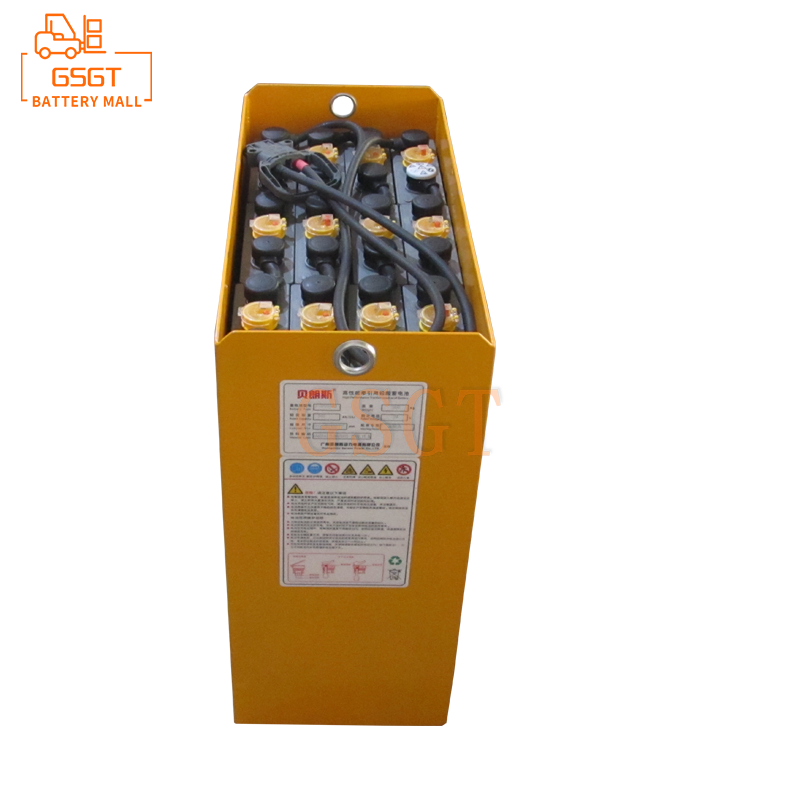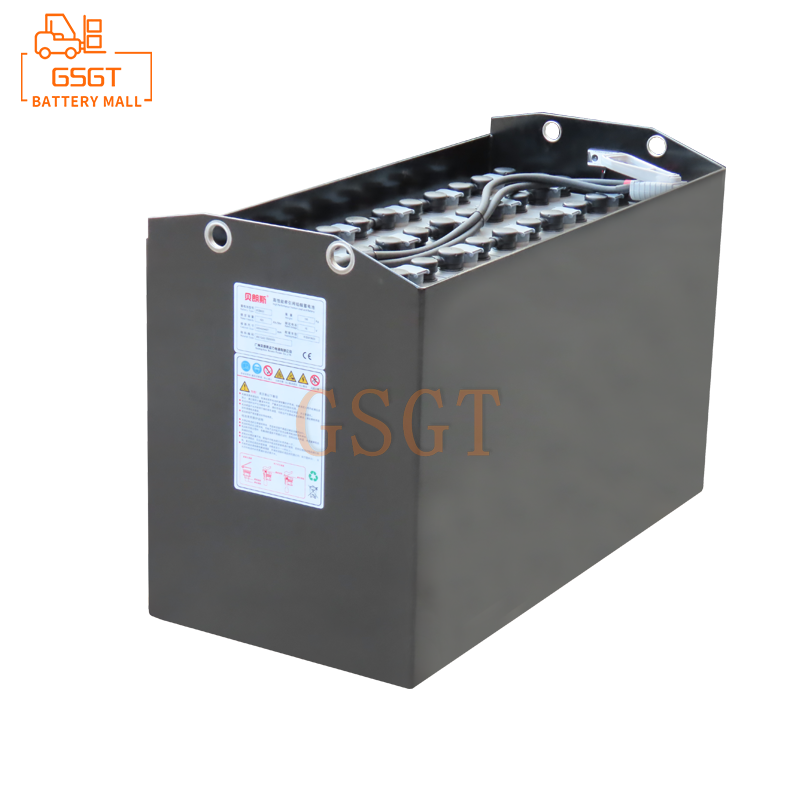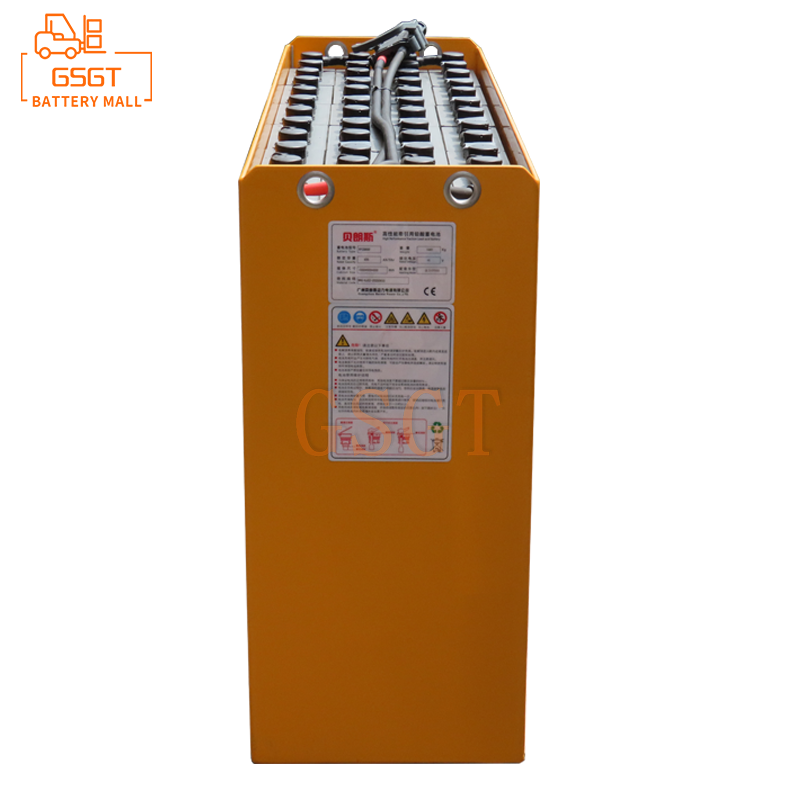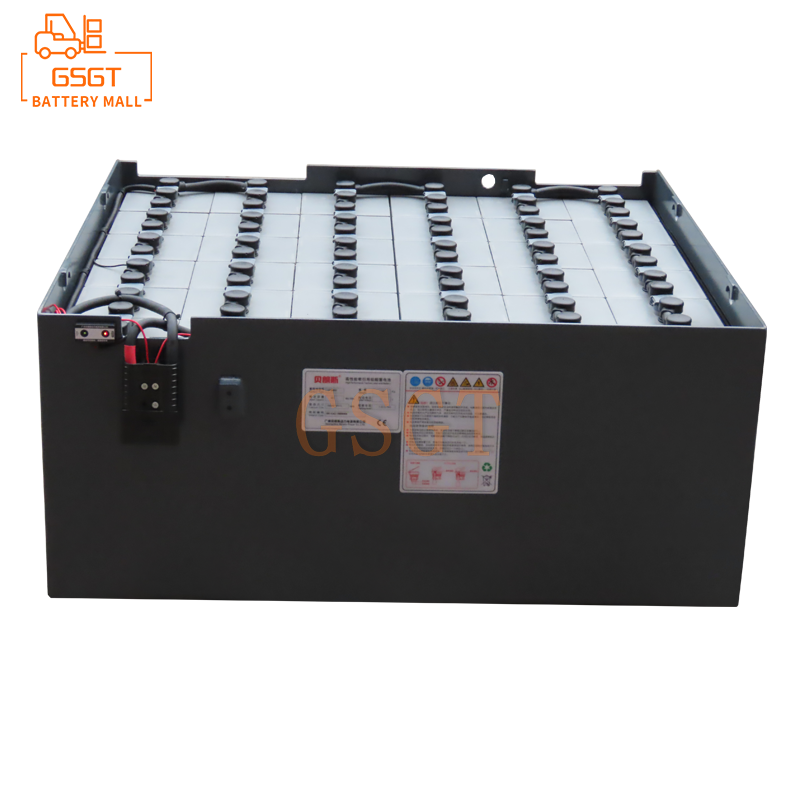Time:2025-04-25 09:45:45
Browse:685
Abstract
This article delves deeply into the heat dissipation design and temperature control issues of lead-acid batteries in forklifts. This paper expounds the significant influence of temperature on the performance and lifespan of lead-acid batteries, and analyzes th e main sources of heat generated by batteries in the working environment of forklifts and the challenges faced in heat dissipation. The common heat dissipation design methods are introduced in detail, including natural heat dissipation, forced air cooling, liquid cooling and other technologies, and the principles, advantages and disadvantages, and application scenarios of different heat dissipation technologies are compared. Meanwhile, effective temperature control strategies have been proposed, such as the construction of temperature monitoring systems and the application of temperature control algorithms. It aims to provide a comprehensive reference for the heat dissipation design and temperature control of lead-acid batteries in forklifts, in order to enhance the performance of lead-acid batteries, extend their service life, and ensure the safe and stable operation of forklifts.
1. Introduction
In the modern logistics industry, forklifts, as important handling equipment, are widely used in warehouses, ports, factories and other places. Lead-acid batteries have become the main power source for forklifts due to their advantages such as mature technology, low cost and good high-current discharge performance. However, lead-acid batteries generate a large amount of heat during charging and discharging. If the heat cannot be dissipated in time, causing the battery temperature to be too high, it will have a serious negative impact on its performance and lifespan. Excessively high temperatures will accelerate the chemical reactions inside the battery, causing the electrolyte to evaporate and the plates to corrode more severely. This, in turn, reduces the battery's capacity and charging and discharging efficiency, and shortens its service life. In addition, excessively high temperatures may also cause safety issues, such as battery swelling, fire and even explosion. Therefore, a reasonable heat dissipation design and effective temperature control are of vital importance to forklift lead-acid batteries, directly affecting the forklift's working efficiency, operating costs and safety.
2. Heat Sources and Heat Dissipation Challenges of Lead-Acid Batteries in Forklifts
(1) Sources of heat production
1. ** Heat generation from Electrochemical reactions ** : During the charging and discharging process of lead-acid batteries, complex electrochemical reactions occur inside. During charging, in addition to the normal conversion reaction of active substances, there will also be side reactions such as water decomposition, all of which generate heat. During the discharge process, the active substances on the plates react with the electrolyte and also release heat. As the charging and discharging current increases, the electrochemical reaction intensifies, and the heat generation will also increase accordingly.
2. ** Internal resistance heat generation ** : There is a certain resistance inside the battery. When current passes through, heat is generated according to Joule's law. The internal resistance of a battery is related to factors such as the material of the plates, the concentration of the electrolyte, and the temperature. During use, as the battery ages, corrosion of the plates and changes in the concentration of the electrolyte can lead to an increase in internal resistance, thereby generating more heat.
3. ** Environmental factors generating heat ** : The working environment of forklifts is complex and diverse, and they may operate in high-temperature outdoor environments, poorly ventilated warehouses, and other conditions. Excessively high ambient temperature will cause external heat from the battery to be transferred in. Meanwhile, in poor ventilation conditions, the heat generated by the battery is difficult to dissipate into the surrounding environment, further intensifying the increase in battery temperature.
(2) Heat Dissipation Challenge
1. ** Space Limitation ** : The forklift is compact-designed, leaving limited space for the installation of lead-acid batteries. This makes it difficult to adopt large-scale heat dissipation devices when conducting heat dissipation design, and efficient heat dissipation needs to be achieved within a limited space.
2. ** Vibration and Dust ** : During the operation of forklifts, vibration is generated, which may cause the heat dissipation components to loosen or have poor connections, affecting the heat dissipation effect. Meanwhile, there is often a large amount of dust in the working environment of forklifts. Dust tends to accumulate on the heat dissipation channels and components, blocking the heat dissipation paths and reducing the heat dissipation efficiency.
3. ** Complex working mode ** : The working mode of forklifts is characterized by intermittence and high intensity. In a short period of time, frequent charging and discharging operations may be required, which will cause the battery temperature to rise rapidly and fluctuate greatly, increasing the difficulty of heat dissipation and temperature control.
3. Common Heat Dissipation Design Methods for Forklift Lead-Acid Batteries
(1) Natural heat dissipation
1. ** Principle ** : Natural heat dissipation utilizes the natural convection and thermal radiation of air to transfer the heat generated by the battery to the surrounding environment. By increasing the contact area between the battery surface and the air, the heat transfer efficiency is enhanced. For instance, designing heat dissipation fins on the battery casing increases the heat dissipation area and promotes the natural flow of air to carry away heat.
2. ** Advantages ** : The natural heat dissipation structure is simple, no additional power equipment is required, the cost is low, the reliability is high, and maintenance is convenient. It is suitable for occasions where the heat dissipation requirements are not high and the heat generated by the battery is small.
3. ** Disadvantages ** : The heat dissipation efficiency is relatively low and is greatly affected by the ambient temperature and air flow velocity. In high-temperature and poorly ventilated environments, the heat dissipation effect is poor, making it difficult to meet the heat dissipation requirements of forklift lead-acid batteries during high-intensity operation.
4. ** Application Scenarios ** : It is suitable for small forklifts or forklifts operating in low-temperature and well-ventilated environments, as well as lead-acid batteries with relatively low requirements for heat dissipation performance.
(2) Forced air cooling
1. ** Principle ** : Forced air cooling is achieved by installing fans and other forced ventilation equipment to accelerate the flow of air around the battery and remove the heat generated by the battery. Axial flow fans or centrifugal fans can be used to blow air towards the battery surface or through specially designed air ducts to ensure that the air fully contacts the battery, thereby enhancing the heat dissipation efficiency.
2. ** Advantages ** : The heat dissipation effect is significantly improved compared to natural heat dissipation, which can to a certain extent meet the heat dissipation requirements of forklift lead-acid batteries under normal working conditions. Compared with other heat dissipation methods such as liquid cooling, it has a lower cost, is relatively easy to install and maintain, and does not have particularly strict requirements for installation space.
3. ** Disadvantages ** : Devices such as fans consume a certain amount of electricity, increasing the energy consumption of the system. Meanwhile, the fan will generate noise during operation, and its service life is limited, requiring regular maintenance and replacement. In addition, in an environment with a lot of dust, dust can easily clog fans and heat dissipation channels, affecting the heat dissipation effect.
4. ** Application Scenarios ** : Widely used in the heat dissipation of lead-acid batteries in forklifts under most ordinary working conditions, especially in situations where high heat dissipation requirements are needed but extreme heat dissipation performance is not required.
(3) Liquid cooling
1. ** Principle ** : Liquid cooling uses a liquid (such as water or coolant) as a heat transfer medium to transfer the heat generated by the battery away. Cooling pipes are installed inside or outside the battery. The liquid circulates in the pipes, absorbing the heat from the battery, and then dissipates the heat to the surrounding environment through the radiator. Common liquid cooling systems include components such as water-cooling plates, coolant circulation pumps, and radiators.
2. ** Advantages ** : Liquid cooling has a high heat dissipation efficiency, can quickly and effectively lower the battery temperature, and has a relatively high control accuracy for the battery temperature. Compared with air cooling, liquid cooling is less affected by environmental factors and can still maintain good heat dissipation performance in harsh environments such as high temperature and high dust. In addition, the liquid cooling system can achieve uniform control of the battery pack's temperature and reduce the temperature differences within the battery pack.
3. ** Disadvantages ** : The liquid cooling system has a complex structure, high cost, and is difficult to install and maintain. It is necessary to prevent coolant leakage. Once leakage occurs, it may cause damage to the battery. Meanwhile, the liquid cooling system is relatively large in volume and has high requirements for installation space, which is not very suitable for the design of forklifts with limited space.
4. ** Application Scenarios ** : It is suitable for forklifts with extremely high requirements for heat dissipation performance and harsh working environments, such as heavy-duty forklifts that operate continuously for long periods in high-temperature conditions, as well as high-performance forklifts with strict requirements for battery temperature consistency.
4. Temperature Control Strategy for Forklift Lead-Acid Batteries
(1) Temperature Monitoring System
1. ** Sensor Selection ** : Selecting the appropriate temperature sensor is the key to building a temperature monitoring system. Commonly used temperature sensors include thermocouples, thermal resistors and semiconductor temperature sensors, etc. Thermocouples have the advantages of wide measurement range and fast response speed, but their accuracy is relatively low. Thermistors have high measurement accuracy, but their response speed is relatively slow. Semiconductor temperature sensors feature high precision, good linearity and small size, making them suitable for temperature monitoring of lead-acid batteries in forklifts with high space requirements. Multiple temperature sensors can be installed at different positions of the battery pack to comprehensively monitor the temperature distribution of the battery pack.
2. ** Data Acquisition and Processing ** : The signals collected by the temperature sensor are converted into digital signals through the data acquisition module and transmitted to the controller for processing. The controller can display the temperature data of the battery in real time and analyze and judge the temperature data. When the temperature exceeds the set threshold, the controller sends out an alarm signal to remind the operator to take corresponding measures.
(2) Temperature Control Algorithm
1. **PID Control Algorithm ** : The PID (Proportional-Integral-Derivative) control algorithm is a commonly used control algorithm and has a good application effect in the temperature control of lead-acid batteries in forklifts. Based on the set temperature value and the actual measured temperature value, through the calculation of the three links of proportion, integration and differentiation, the working state of the heat dissipation equipment is adjusted to keep the battery temperature stable within the set range.
2. ** Intelligent Control Algorithms ** : With the development of artificial intelligence technology, intelligent control algorithms such as fuzzy control and neural network control have gradually been applied in the field of battery temperature control. Fuzzy control does not require the establishment of an accurate mathematical model. It can control the temperature based on experience and rules, and has strong robustness and adaptability. Neural network control can achieve precise temperature control by learning a large amount of data and establishing complex nonlinear mapping relationships. These intelligent control algorithms can better adapt to the complexity and uncertainty of the forklift working environment, and improve the accuracy and effect of temperature control.
(3) Comprehensive Control Strategy
Combine the temperature monitoring system with the heat dissipation equipment and temperature control algorithm to form a complete temperature control system. When the temperature monitoring system detects an increase in battery temperature, it automatically adjusts the working state of the heat dissipation equipment based on the temperature control algorithm, such as increasing the fan speed or the coolant flow rate, to promptly lower the battery temperature. Meanwhile, based on factors such as the charging and discharging state of the battery and the working environment, the temperature control strategy is dynamically adjusted to achieve the optimal control of the battery temperature.
5. Conclusion
The heat dissipation design and temperature control of lead-acid batteries in forklifts are key links to ensure the normal operation of forklifts, improve battery performance and lifespan. Through the analysis of the heat generation sources and heat dissipation challenges of lead-acid batteries, we have learned that in the working environment of forklifts, battery heat dissipation faces many difficulties. Different heat dissipation design methods such as natural cooling, forced air cooling, and liquid cooling each have their own advantages and disadvantages and are suitable for different application scenarios. Combined with effective temperature control strategies such as temperature monitoring systems and temperature control algorithms, precise control of the temperature of lead-acid batteries in forklifts can be achieved. In practical applications, the appropriate heat dissipation design method and temperature control strategy should be comprehensively selected based on factors such as the working characteristics, performance requirements and cost budget of forklifts to enhance the reliability and stability of lead-acid batteries and promote the sustainable development of the forklift industry. In the future, with the continuous advancement of technology, the heat dissipation design and temperature control technology of forklift lead-acid batteries will be constantly innovated and improved, providing more powerful support for the efficient operation of the logistics industry.

$1105

$2450

$3810

$4045

MESSAGE
Professional And Efficient
Security
Affordable Price
Professional Services